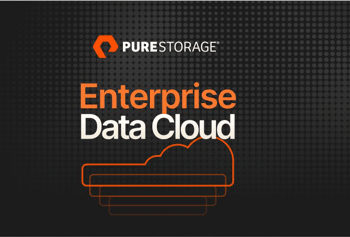At the recent Pure//Accelerate event, Pure Storage, Inc. unveiled its innovative Enterprise Data Cloud (EDC), aiming to set a new standard in data and storage management. With the EDC, organizations are encouraged to concentrate on achieving business outcomes instead of becoming bogged down by complex infrastructure management.
The Challenge of Modern Data Management
In an era where data volumes are rapidly increasing and the demands from businesses become more complex, traditional storage models prove to be inadequate. They are often mired in fragmentation and create silos, leading to uncontrolled data sprawl. This fragmentation results in inefficiencies, increased risk, and difficulties in maintaining compliance with regulations.
As organizations grapple with evolving data needs, they must shift their focus from merely managing storage systems to understanding how data is generated, shared, and utilized. This strategic transition can significantly empower organizations to minimize risks, cut costs, and enhance operational efficiency.
What the Enterprise Data Cloud Offers
The Enterprise Data Cloud architecture revolutionizes the way organizations manage their data. This framework enables businesses to efficiently oversee their data across various environments—be it on-premises, in the public cloud, or in hybrid setups. With a unified control layer, IT teams can centrally manage data, ensuring flexible, autonomous governance throughout the entire data lifecycle.
By centralizing control through the EDC, organizations can:
- Achieve unparalleled agility and efficiency in data management.
- Reduce operational risks and improve compliance through automation.
- Gain valuable insights and visibility across their data estate.
“It’s time to stop managing storage and start managing data,” says Charles Giancarlo, chairman and CEO of Pure Storage. “With AI increasing the potential value of enterprise data, and cyber threats imperiling it, data storage architectures and the tools for managing data have not kept pace.” This statement underscores Pure Storage’s commitment to providing an architectural approach that allows users to effectively manage their global data estate.
The Role of Pure Fusion
At the heart of the Enterprise Data Cloud is Pure Fusion, which redefines storage by treating it as a pool of adaptable resources. Pure Fusion is integrated into the storage arrays, allowing for automatic discovery of resources without extensive administrative setup. This simplifies management, making it accessible from any system by treating each array as an endpoint.
Recently, Pure Fusion has introduced new capabilities, including workload automation presets and remote provisioning. These updates provide administrators with increased flexibility based on specific workload requirements, decreasing compliance risks and enhancing resilience by ensuring that deployments are correctly provisioned from the outset.
Enhancing Security and Compliance
Enterprises today face heightened risks and challenges related to compliance and operational inefficiencies stemming from manual processes. To address these issues, the EDC incorporates automation throughout its platform, offering policy-driven orchestration and self-service capabilities. Built-in compliance measures and improved cyber resilience aim to minimize risks associated with security and governance policies.
Moreover, Pure Storage has partnered with Rubrik, Inc to enhance security protocols. This collaboration integrates anomaly threat detection capabilities within the EDC. When the Rubrik Security Cloud identifies a threat, Pure Fusion can automatically tag indelible SafeMode snapshots, facilitating rapid data recovery while ensuring minimal disruption to business operations.
Future Collaborations and Innovations
In another strategic collaboration, CrowdStrike Holdings, Inc has created an on-premises storage solution optimized for Falcon LogScale deployments. This partnership aims to provide organizations with robust log analytics and security capabilities while retaining the advantages of on-premises self-hosted environments.
These integrations signify a notable shift in how data management strategies are developing, combining high-performance storage infrastructure with real-time security measures to ensure compliance and security in an increasingly complex digital landscape.
Market Reaction and Industry Implications
The introduction of the Enterprise Data Cloud has generated considerable attention within the tech community. According to a recent report by Statista, the global market for enterprise storage solutions is projected to reach $95 billion by 2026, indicating a growing demand for innovative data management solutions. Analysts like Matt Kimball from Moor Insights & Strategy have lauded the EDC for its potential to streamline data management at scale. “Pure’s Enterprise Data Cloud represents a real change at the architectural level,” he noted, highlighting the platform’s ability to bring clarity and control to data complexities.
The capabilities of the Pure Storage platform signify a potential game-changer for organizations seeking to integrate data governance, enhance operational efficiency, and streamline compliance. By harmonizing the management of various data environments into a singular platform, the Enterprise Data Cloud encourages businesses to adopt a forward-thinking approach to data strategy.
As the digital landscape continues to evolve, solutions like Pure Storage’s EDC could play a pivotal role in shaping the future of enterprise data management.
Quick Reference Table
| Aspect | Details |
|---|---|
| Platform Introduction | Enterprise Data Cloud (EDC) |
| Core Component | Pure Fusion |
| Primary Features | Automated provisioning, self-service capabilities, and unified control |
| Key Partnerships | Rubrik, CrowdStrike |
| Market Prediction | $95 billion by 2026 |
| CEO’s Statement | Focus on managing data, not just storage |

